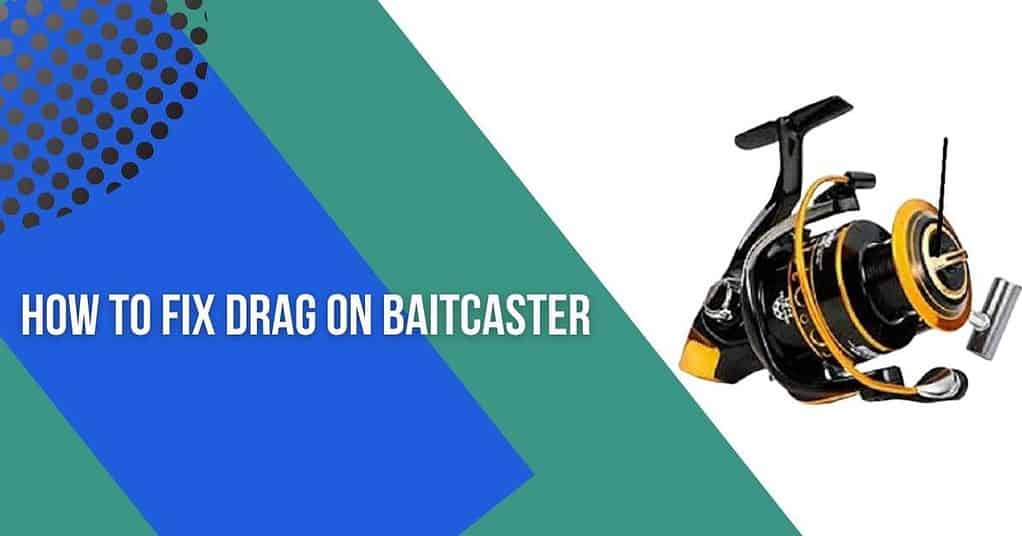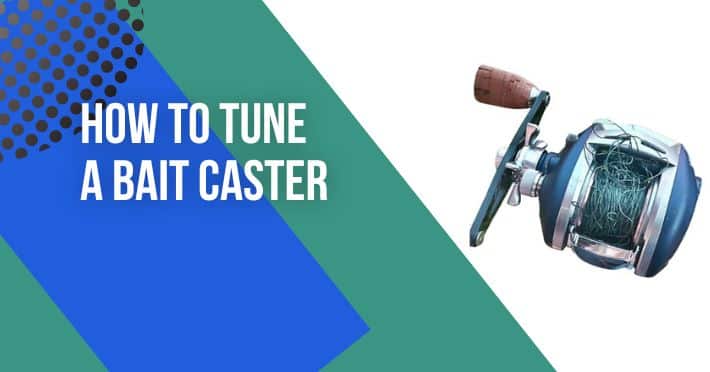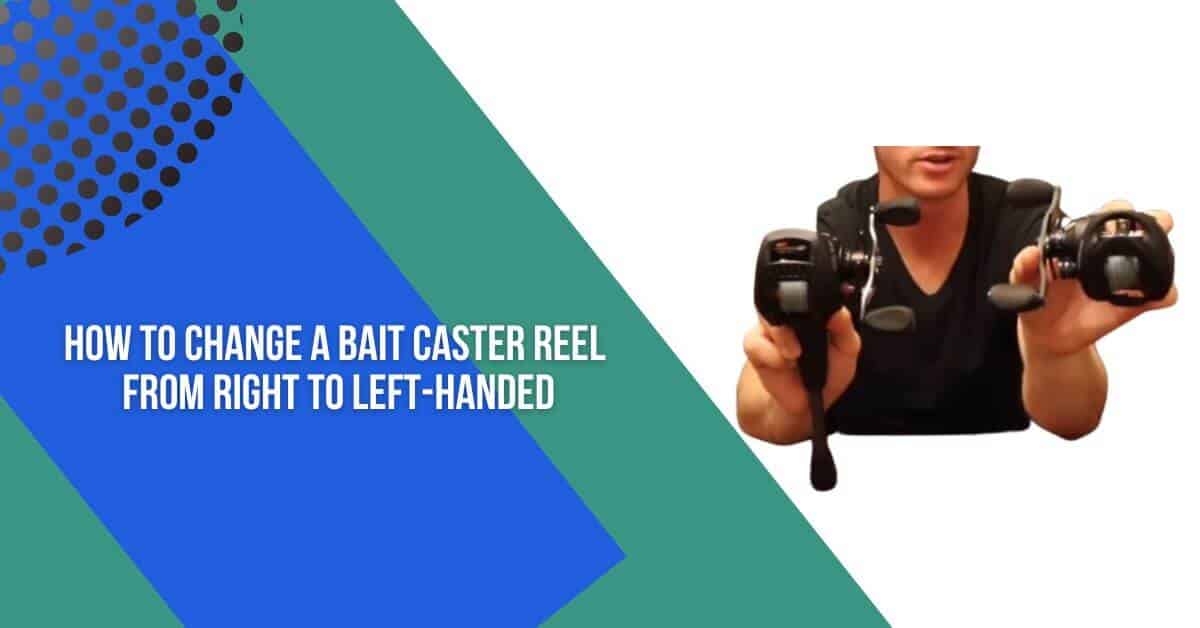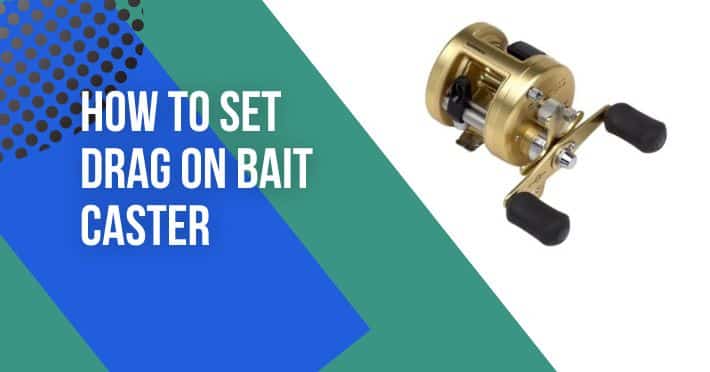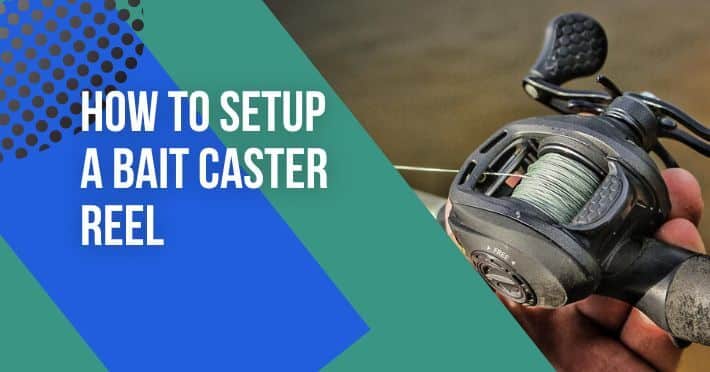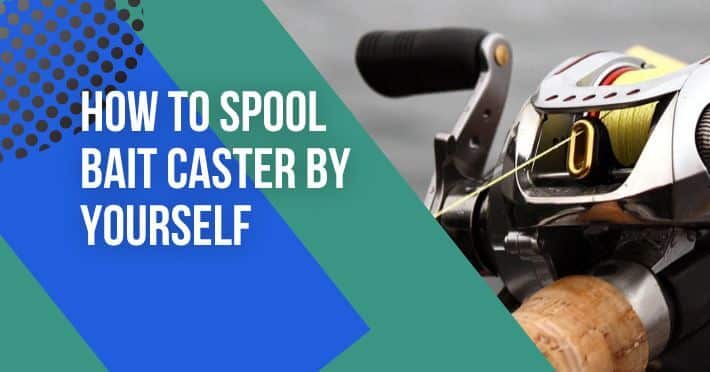Contents
- 1 How to Set the Drag
- 2 How To Fix Drag On Baitcaster
- 3 Adjust The Drag Settings:
- 4 Check The Spool Tension:
- 5 Clean And Lubricate The Reel
- 6 Check The Line
- 7 Check The Brake System
- 8 How to fix a common baitcaster problem
- 9 Frequently Asked Questions!!
- 10 How to fix a baitcaster that won’t reel?
- 11 How to fix a broken drag on baitcaster?
- 12 Why is my baitcaster drag not working?
Baitcasting reels are a popular choice among anglers for their versatility and accuracy in casting. However, if you experience drag on your baitcaster, it can greatly impact your fishing experience by making it difficult to cast accurately and retrieve your catch smoothly.
Drag issues can occur for a variety of reasons, such as improper adjustment, dirt or debris buildup, or wear and tear on the reel. Fortunately, fixing drag on a baitcaster is a relatively simple process that can be done at home with just a few basic tools and some patience.
In this guide, we will cover the step-by-step techniques of how to fix drag on baitcaster l, so you can get back to enjoying your fishing experience to the fullest.
How to Set the Drag
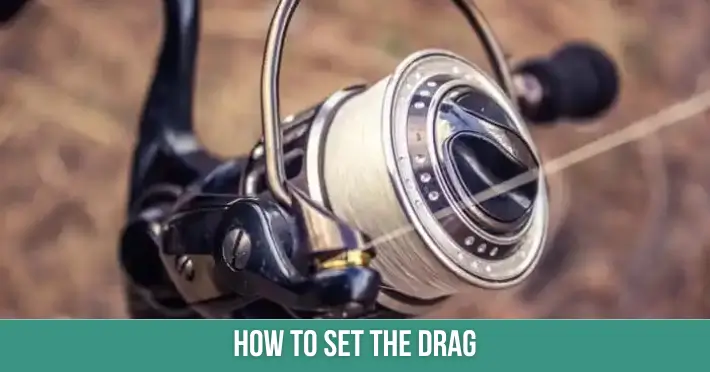
Fishing transcends mere recreation; it’s a symphony of technique and intuition. With each graceful cast, the shimmering waters beckon, inviting both angler and fish into a timeless dance. As the line unfurls, anticipation hangs heavy in the air, culminating in the electrifying moment of the first bite.
Setting the hook requires finesse, a delicate balance between timing and precision. Whether maneuvering conventional reels or baitcaster reels, mastering the adjustment of the drag is paramount. It’s a skill honed through experience, a silent negotiation between angler and prey.
Being ready extends beyond the mere possession of gear; it’s an intuitive understanding of nature’s rhythms. Each lure tells a story, each adjustment of the drag a testament to the angler’s expertise.
In the fluidity of the moment, setting the drag is not just a mechanical act but a communion with the elements, a celebration of the timeless art of angling.
How To Fix Drag On Baitcaster
If you’re experiencing drag on your baitcaster reel, there are a few steps you can take to fix it. By following these steps, you should be able to fix any drag issues you’re experiencing on your baitcaster reel. If you know how to fix drag on baitcaster, you’ll easily do fishing and experience the best results.
Adjust The Drag Settings:
Locate the drag adjustment knob on your baitcaster reel. This knob controls the amount of pressure on the spool, and therefore the amount of resistance the fish will feel when it pulls on the line. Adjust the knob to increase or decrease the drag as needed.
Adjusting the drag settings on a baitcaster is a crucial step in ensuring that you have a successful fishing experience. The drag system on a baitcaster reel controls the amount of resistance that the fish feels when it pulls on the line, which prevents the line from breaking or the fish from escaping.
Here are the steps to adjust the drag settings on a baitcaster reel:
- Locate the drag adjustment knob, which is typically located on the top of the reel.
- Tighten the drag knob by turning it clockwise to increase the resistance on the line. This is useful when fishing for larger fish or when using heavier lures.
- Loosen the drag knob by turning it counterclockwise to decrease the resistance on the line. This is useful when fishing for smaller fish or when using lighter lures.
- Test the drag by pulling the line with your hand. The line should have some resistance but not be too tight, as this can cause the line to break.
- Make additional adjustments as needed until you find the optimal setting for your fishing conditions.
It’s important to note that the drag setting should be adjusted based on the size and strength of the fish you’re targeting, the weight of your lure, and the fishing conditions. With practice, you’ll become more familiar with adjusting the drag settings on your baitcaster reel to optimize your fishing success.
Check The Spool Tension:
If the spool tension is too tight, it can cause drag on the reel. Adjust the tension by using the knob on the opposite side of the reel to adjust the amount of pressure on the spool.
Checking the spool tension on a baitcaster is an important step in setting up the reel for optimal casting performance. Here are the steps to check the spool tension:
- Turn off the brake: Many baitcasting reels have an external brake system that helps to control the spool’s rotation during casting. Before checking the spool tension, make sure to turn off the brake system.
- Hold the rod: Hold the rod as you would when casting, with the reel facing up.
- Press the spool release button: Press the spool release button on the side of the reel to disengage the spool and allow it to rotate freely.
- Adjust the tension knob: Turn the tension knob located on the same side of the reel as the spool release button. The knob will either tighten or loosen the spool tension. The goal is to adjust the tension so that the spool rotates smoothly without overrunning or spinning too slowly.
- Test the spool tension: To test the spool tension, lightly flick the rod tip up and down. The spool should rotate smoothly without overrunning or spinning too slowly. If the spool overruns, tighten the tension knob. If the spool spins too slowly, loosen the tension knob.
- Fine-tune the spool tension: After testing the spool tension, make small adjustments to the tension knob as needed until the spool rotates smoothly without overrunning or spinning too slowly.
By following these steps, you can check and adjust the spool tension on a baitcasting reel to optimize casting performance and reduce the risk of backlash.
Clean And Lubricate The Reel
Dirt, debris, and lack of lubrication can cause drag on a baitcaster reel. Clean the reel thoroughly and apply lubrication to the moving parts. Cleaning and lubricating the reel on a baitcaster is an important maintenance task that helps to keep the reel running smoothly and prolong its lifespan.
Here are the steps to follow. By following these steps, you can ensure that your baitcaster reel stays in good working condition and is ready for your next fishing trip.
- Disassemble the Reel: First, remove the spool and side plates from the reel. If there are any screws holding the side plates in place, use a screwdriver to remove them.
- Clean the Reel: Once the reel is disassembled, clean each part with a clean cloth or brush. Use a solvent or degreaser to remove any dirt, debris, or old lubricant that has accumulated in the reel. You can use a toothbrush or a small soft brush to get into hard-to-reach areas.
- Lubricate the Reel: After cleaning, apply a small amount of reel oil or grease to the gears, bearings, and other moving parts. Be sure to use the appropriate lubricant for each part. Avoid over-lubricating, as this can cause the reel to become sluggish.
- Reassemble the Reel: Once you have cleaned and lubricated the reel, reassemble it by carefully putting the side plates and spool back into place. Make sure that all screws and bolts are tightened correctly.
- Test the Reel: Finally, test the reel by reeling in some lines and casting a few times to make sure that it is running smoothly. If it feels rough or makes unusual noises, disassemble the reel again and check for any problems.
Check The Line
A tangled or twisted line can also cause drag on the reel. Make sure the line is properly spooled and not tangled. Checking the line” on a baitcaster refers to inspecting the fishing line to make sure it is properly spooled onto the reel and is not tangled or twisted.
By checking the line on your baitcaster regularly, you can ensure that your fishing experience is smooth and successful.
It’s important to check the line before each use to avoid any potential issues while fishing, such as line breaks or tangles. To check the line on a baitcaster, follow these steps:
- Hold the rod with the reel facing up and loosen the drag.
- Inspect the line on the spool to make sure it is wound tightly and evenly.
- Slowly reel in the line, making sure it does not twist or tangle.
- As you reel in the line, check for any abrasions, nicks, or other damage to the line. If you find any, it’s best to replace the line.
- Once the line is fully reeled in, test the drag by pulling the line with your hand. It should release smoothly without any sudden jerks or resistance.
Check The Brake System
If the brake system is not functioning properly, it can cause drag on the reel. Check the brake system and adjust it as needed. A baitcaster is a type of fishing reel that uses a spool to hold and release the fishing line.
The brake system on a baitcaster is an important component that helps to prevent backlashes, which occur when the spool spins faster than the fishing line can be released.
Backlashes can cause tangles and knots in the fishing line, which can be frustrating and time-consuming to fix. To check the brake system on a baitcaster, follow these steps:
- Remove the fishing line from the spool to expose the brake system.
- Look for the brake adjustment knob, which is usually located on the side plate of the reel. The knob may be marked with numbers or symbols that indicate the level of braking force.
- Turn the knob to adjust the brake system. If you want more braking force, turn the knob clockwise. If you want less braking force, turn the knob counterclockwise.
- Test the brake system by gently pulling on the fishing line while holding the spool in place. The line should come off the spool smoothly and without backlashes.
- Repeat the adjustment process until you are satisfied with the level of braking force. It may take some trial and error to find the right setting for your fishing conditions and personal preferences.
- Once you have adjusted the brake system, re-spool the fishing line and test the reel in the field to ensure that it is working correctly.
How to fix a common baitcaster problem
Conclusion
In conclusion, fixing drag on a baitcaster is a crucial aspect of fishing that can make a significant difference in your overall experience. The drag system is an essential component that helps you to control the amount of pressure exerted on the fish during retrieval. Over time, the drag system can become damaged or worn out, leading to reduced efficiency and poor performance.
Fortunately, there are various ways to fix drag on a baitcaster, including cleaning and lubricating the reel, adjusting the drag washers, replacing the drag washers, or upgrading to a better drag system. It’s essential to identify the root cause of the drag problem and take appropriate action to prevent future occurrences.
By following the steps outlined in this guide, you can restore your baitcaster’ s drag system and enjoy a seamless fishing experience. Now you will get the best answer to your query of how to fix drag on baitcaster. Remember to take good care of your reel by regularly maintaining it, and it will reward you with smooth and reliable performance for many years to come.
Frequently Asked Questions!!
How to fix a baitcaster that won’t reel?
If your baitcaster wont reel, there are a few things you can check to try to fix the issue. If none of these solutions work, it may be necessary to take your baitcaster to a professional for repair or replacement.
Check the spool tension knob: The spool tension knob is typically located on the same side of the reel as the handle. It’s possible that the tension is set too tight, making it difficult to reel in your line. Try loosening the knob to see if this helps.
Check the brake system: Many baitcasters have a brake system that helps to control the speed of the spool. If the brake system is engaged too much, it can make it difficult to reel in your line. Try adjusting the brake system to a lower setting.
Check for the tangled lines: It’s possible that your line has become tangled or knotted on the spool, which can make it difficult to reel in. Carefully inspect your line and remove any tangles or knots that you find.
Check the bearings: If the bearings in your baitcaster are dirty or worn out, it can make it difficult to reel in your line. Try cleaning the bearings or replacing them if necessary.
Check the handle and gears: The handle and gears on your baitcaster can become worn out over time, which can make it difficult to reel in your line. If you suspect that this is the issue, you may need to replace these components.
How to fix a broken drag on baitcaster?
Fixing a broken drag on a baitcaster reel will depend on the specific issue that’s causing the problem. Here are some general steps you can follow:
Identify the problem: The first step is to determine what’s causing the drag to be broken. Some common issues include worn or damaged drag washers, a loose or damaged drag knob, or a damaged drag spring.
Disassemble the reel: To access the drag system, you’ll need to take apart the baitcaster reel. You’ll want to refer to your reel’s manual or look for a video tutorial to guide you through the process, as disassembly can vary depending on the model of the reel.
Inspect the drag system:
Once you have the reel apart, inspect the drag washers, drag knob, and drag spring for damage or wear. If any of these components are damaged, you’ll need to replace them.
Why is my baitcaster drag not working?
There could be several reasons why your baitcaster drag is not working. Here are a few things to check:
Check if the drag is engaged: Make sure that the drag is turned on and tightened before casting. You can do this by turning the star drag clockwise until it feels tight.
Check if the drag system is dirty: Over time, dirt, debris, and fishing lines can accumulate inside the drag system and cause it to malfunction. Clean the drag system by disassembling the reel and removing any dirt or debris that may be causing the problem.
Check if the drag washers are worn: Drag washers are located inside the spool and can wear out over time, especially if you fish often or catch large fish. If the drag washers are worn, they may need to be replaced.

